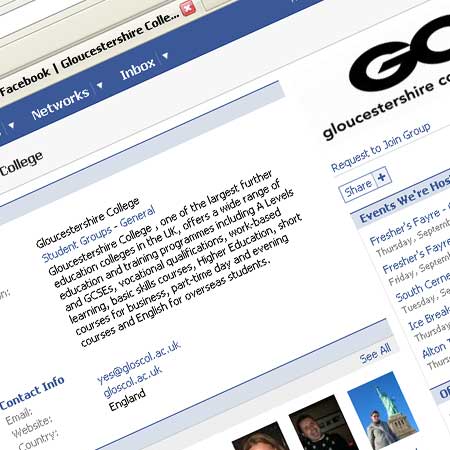We are in the process of looking at Facebook because our learners are wanting to use it to engage and interact with the college. It is in the main for the social and sports side of college (which is why a lot of learners come to (and stay at a college)).
Gloucestershire College Facebook Group
(note you need to be a member of facebook to access this page)

It is in the main going to be used for marketing.
Whether we use it for teaching and learning… well this is a different question.
There is already a college Facebook network (set up by the students)
The learners are already engaging with Facebook, we as institution need to consider how we are going to engage with both Facebook and the students who are using Facebook.
As for blocking facebook, we don’t.
We do however (for some reason) block bebo, however students (and one or two staff) are using bebo on a daily basis in college…
Interesting Facebook links
Facebook: Engage with it or leave it alone?
12 Ways to Use Facebook Professionally
Bluetooth helps Facebook friends
I personally think there is real potential to utilise social networking to support teaching and learning.
Our students network socially (in the offline world) already to support their learning, they meet for coffee, they create study groups, they share information and resources.
An online social network allows them to do this at a time and place to suit them, it also allows some students who would be discrimnated in a physical social network to engage.
An online social network will not replace an offline social network, it is not an “either or” situation, for me it is about supporting learners to learn.




